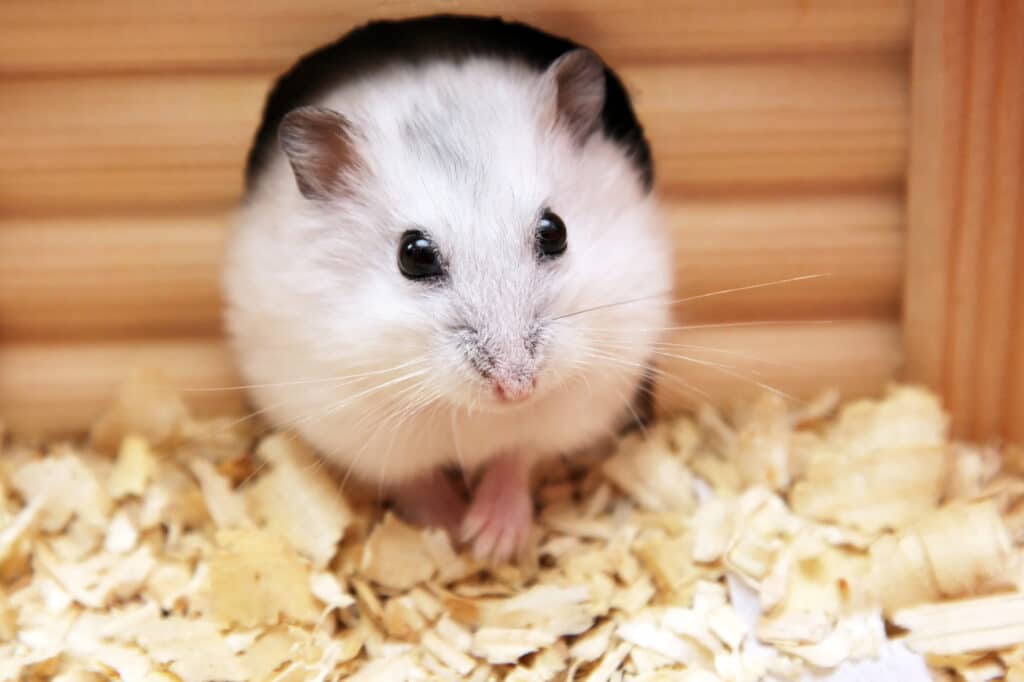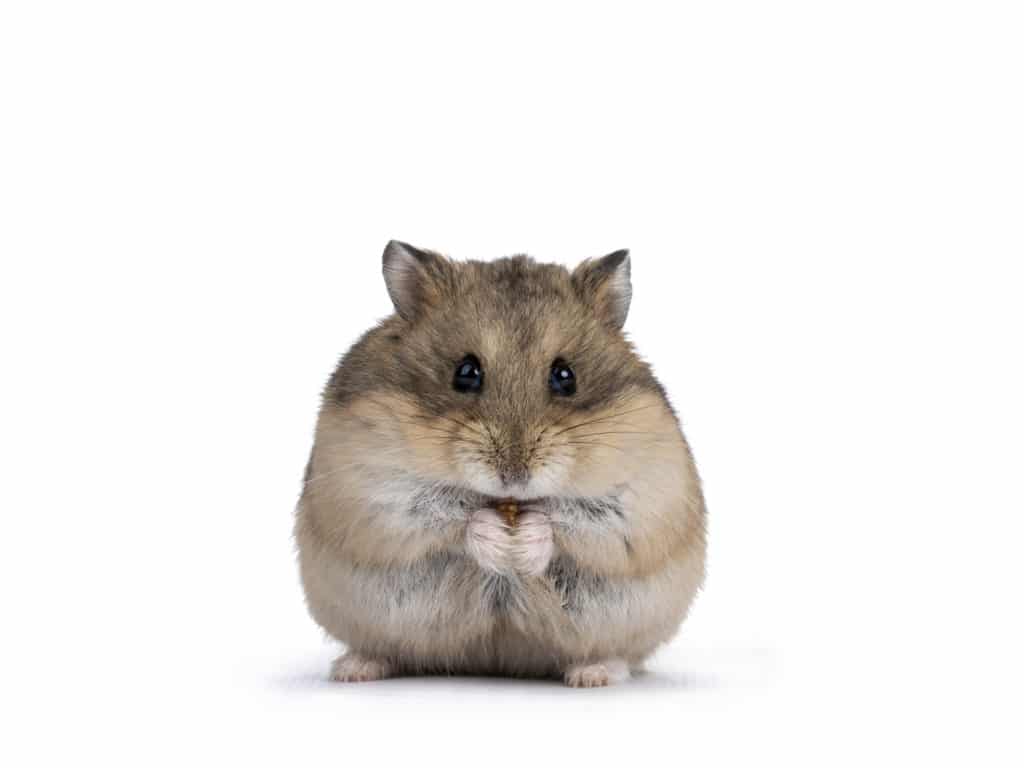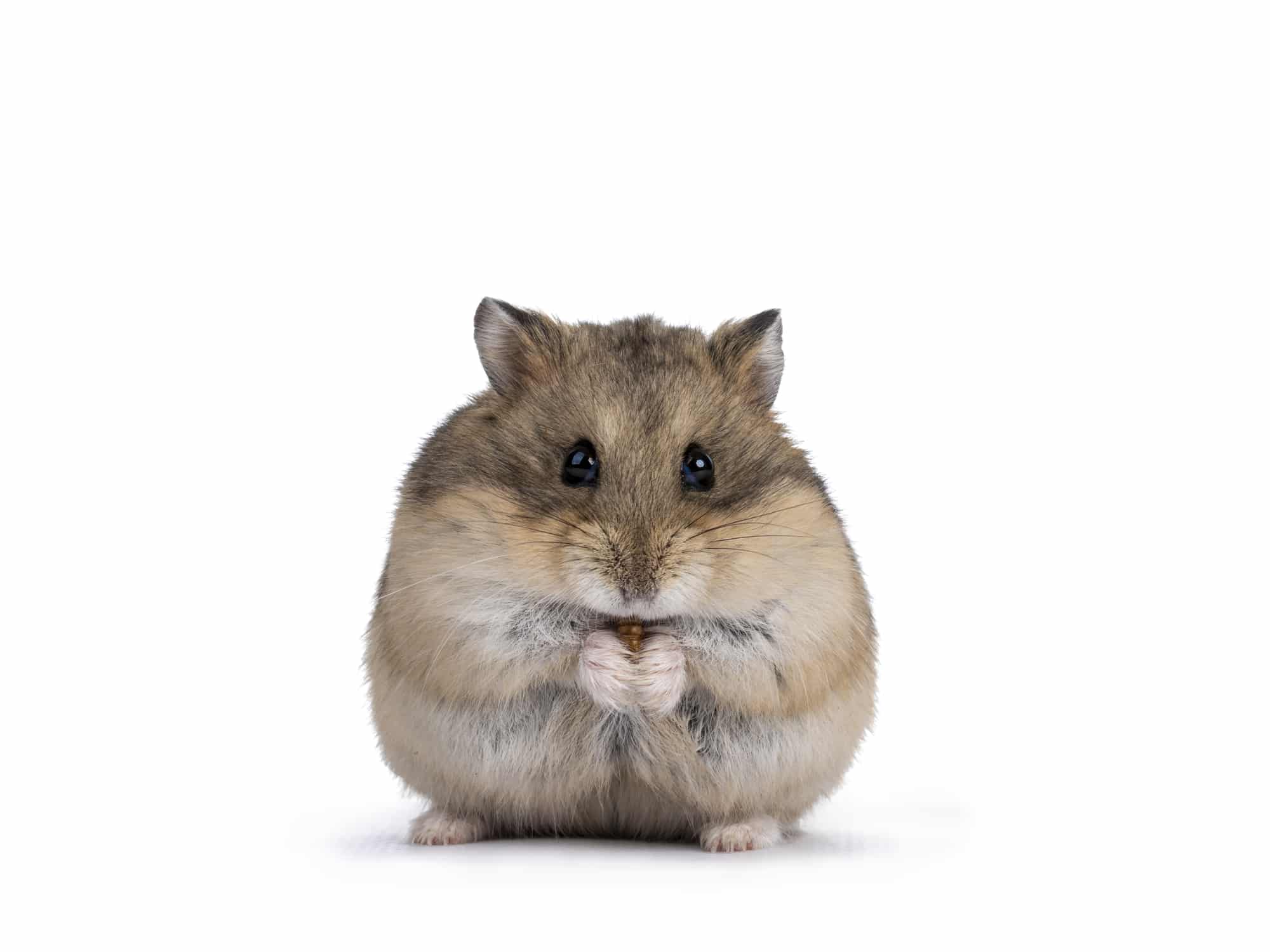The animal kingdom is full of animals with weird behaviors – Bats eating and pooping through their mouth; Cows eating grass, then regurgitating it and chewing on it again; Some ribbon worms eating themselves if they cannot find food; etc. These behaviors may be both surprising and disgusting for humans. But this is how these animals have evolved to survive. In this list of animals, rodents, like hamsters, also find a place because they eat their own poop. So, if you’re wondering if hamsters eat their own poop, yes, hamsters eat their poop.
So, if you were surprised and disgusted after noticing your pet hamster eating his poop, don’t worry. You are not alone. Many hamster owners who noticed it for the first time felt the same too. So, before you become more disgusted and concerned about your hamster’s behavior, find out the reason behind it.
In this blog post, I will tell you why hamsters eat their poop and why it is not only not disgusting but also healthy for your hamster.
Why do hamsters eat their poop?

The cell walls of plant-based food items like fruits, vegetables, legumes, nuts, and seeds contain cellulose which is made up of thousands of glucose units. Cellulose is the most abundant organic compound on earth and a great source of energy. But humans cannot digest it. If we could digest it, we could survive just by eating hay and grass. Then poverty would exist only in dictionaries (Source: Dartmouth Undergraduate Journal of Science).
However, unlike a human being’s digestive system, a hamster’s digestive system can digest cellulose. But the only problem is that hamsters are hindgut fermenters, i.e., the cellulose is digested too late in the digestive system, beyond which the nutrients cannot be absorbed. So, the digested food is excreted through your hamster’s anus as poop. The only way for your hamster to absorb these nutrients is to consume his own poop. If your hamster didn’t do that, his body wouldn’t be able to obtain important vitamins like Vitamin K and some B vitamins. It also helps him absorb the glucose in cellulose, which is an incredible source of energy.
To understand this better, let’s look at how a hamster’s digestive system works.
How does a hamster’s digestive system work?
To understand why your hamster eats his own poop, let’s find out what happens to the food he eats as it travels through his digestive system (Source: Zooplus).
1. Incisors
Like most animals, in a hamster, too, the digestion of the ingested food begins in the mouth. Incisors, the sharp and chisel-like teeth, are useful in cutting up chunky pieces of food and breaking the shells of seeds. Incisors of hamsters keep growing until they die.
2. Molars
Molars are located further back in the mouth, and they are useful in crushing and grinding the ingested food. Between the molars, food gets mixed with saliva, which is secreted by the salivary glands. Saliva not only makes the food wet and soft but also contains enzymes, which act as bio-catalysts and start the process of digestion.
3. Forestomach
Unlike humans, hamsters have two stomachs – The forestomach and the glandular stomach. The first stomach, the forestomach, is where the food is stored briefly and moistened before moving to the glandular stomach.
4. Glandular stomach
In the second stomach, the glandular stomach, the actual process of digestion begins. The food components are broken down and mixed with hydrochloric acid produced by special cells. The stomach is lined with muscular walls, which not only ensure that the stomach’s contents are mixed thoroughly but also that the contents are emptied into the upper small intestine.
5. The upper small intestine
In this part of a hamster’s digestive system, the mush (soft, wet, pulpy mass) of food from the glandular stomach is mixed with enzymes and other fluids before being sent to the small intestine.
6. The liver and the pancreas
The liver secretes bile, which changes the nature of the mush from acidic to alkaline. The pancreas releases enzymes to break down carbohydrates and fats.
7. The small intestine
This is the single most important part of the digestive system. The small intestine contains villi, small finger-like projections connected to blood vessels (Source: Wikipedia). The digested nutrients pass through the semi-permeable villi and reach the bloodstream, through which they are carried to various parts of the body. So, the small intestine is where the digested nutrients are absorbed.
8. Cecum
There is an organ called the cecum between the small intestine and the colon. The cecum of a hamster is similar to the appendix in humans. But even though an appendix doesn’t serve any purpose in humans, a cecum is extremely important for hamsters.
In most animals, including humans, large fiber particles pass through the cecum, then the colon, and are then excreted through the anus. But the process is different in rodents like hamsters, guinea pigs, etc. (Source: Pet Coach). In these animals, the nutrient-rich portion of the partly digested food is moved back from the colon to the cecum through special muscle contractions in the colon.
The cecum contains a lot of specialized bacteria and hence, acts as a fermentation chamber. This is where hard-to-digest components of the ingested food are digested into fragments that can be absorbed quickly, like simple sugars and amino acids. In particular, cellulose is broken down into glucose.
However, since the food has already passed through the small intestine, there is no way for a hamster’s digestive system to absorb the nutrients digested in the cecum.
9. Colon
After the cecum, the mush of food passes through the large intestine. The large intestine consists of the colon, rectum, and anus. First, the food passes through the colon.
By this time, the food is almost completely digested, but it is watery. So, the colon absorbs the water from the mush of food.
In the colon, too, there are a lot of microbes that ferment the food particles and aid in different metabolic processes. They also synthesize fatty acids from food particles.
10. Rectum
The rectum extracts the remaining moisture from the digested mass, creating hard pellets.
11. Anus
The pellets are then excreted through the anus. The pellets can either contain food that cannot be digested anymore or a surplus of nutrients.
So, to summarize, there are two types of poops that a hamster excretes:
- The dry, hard pellets, which contain the undigested components of the ingested food.
- The moister, softer, and smaller poop, called cecotropes, which contain ready-to-absorb nutrients.
Cecotropes
What are cecotropes?
Cecotropes, also known as caecal pellets, night feces, or soft feces, are the result of the digestion of hard-to-digest food components by the cecum. You may think of it as just hamster poop. But they are rich in nutrients, including simple sugars, amino acids, and vitamins B and K, that can be easily absorbed by a hamster’s body.
Why are cecotropes important?
As mentioned above, cecotropes are rich in nutrients. The only way for a hamster to absorb these nutrients is by consuming these cecotropes.
Once your hamster consumes these cecotropes and they reach his small intestine, all the nutrients that couldn’t be absorbed the first time around are absorbed. Then, the waste product that is left after the nutrients are absorbed is excreted as dry, hard pellets.
Hence, hamsters and other rodents have evolved to eat their poop so that their bodies can effectively absorb the nutrients they need for survival. This process is similar to the rumination process in cows, where cows regurgitate the eaten food and chew on them again (to break the food particles down) so that hard-to-digest particles like fiber can be digested. So, your hamster eating his own poop is not only not disgusting but also healthy and essential for his survival.
Therefore, you should never remove these cecotropes or prevent your hamster from eating them because it could cause malnutrition and make him susceptible to diseases.
What do cecotropes look like?
Cecotropes differ from regular fecal pellets. While normal fecal pellets appear dry and hard, cecotropes are moister, softer, and smaller. They are covered in green mucus that makes them stick together. They appear mostly at night.
Your hamster knows the difference between the hard, dry pellets that are actually poop and the moist, soft poop that is filled with nutrients. So, while he won’t eat the dry, hard pellets, he will eat these cecotropes immediately after they are excreted. But you may never get to see him eating the cecotropes because it happens mostly at night.
However, if you happen to see cecotropes lying around, do not remove them. Only remove the hard, dry pellets because these pellets can contain harmful bacteria (transferred from the bedding, urine, etc.), which can cause illness upon consumption. Your hamster normally knows the difference between his poop and cecotropes. So, he won’t eat these dry droppings. But you should still remove the dry droppings to keep his cage clean.
Summary
Hamsters are extremely clean animals. They will often groom themselves and take sand baths to keep themselves clean. So, if you find your furry friend eating his own poop, you may get alarmed. But you have to understand that there are two kinds of hamster poop – the normal, dry hamster droppings and the soft, moist, smaller, sticky droppings. While the former is poop, the latter is a storehouse of essential nutrients like vitamins K and B, amino acids, simple sugars, etc.
The only way for your hamster to obtain these nutrients is by consuming the soft, moist, sticky poop. So, your hamster has evolved to know the difference between his dry poop and his soft poop. Hence, he will eat only his soft poop, which is nutritious, while avoiding dry poop. So, you don’t have to worry if your hamster eats this poop because it is healthy for him.



